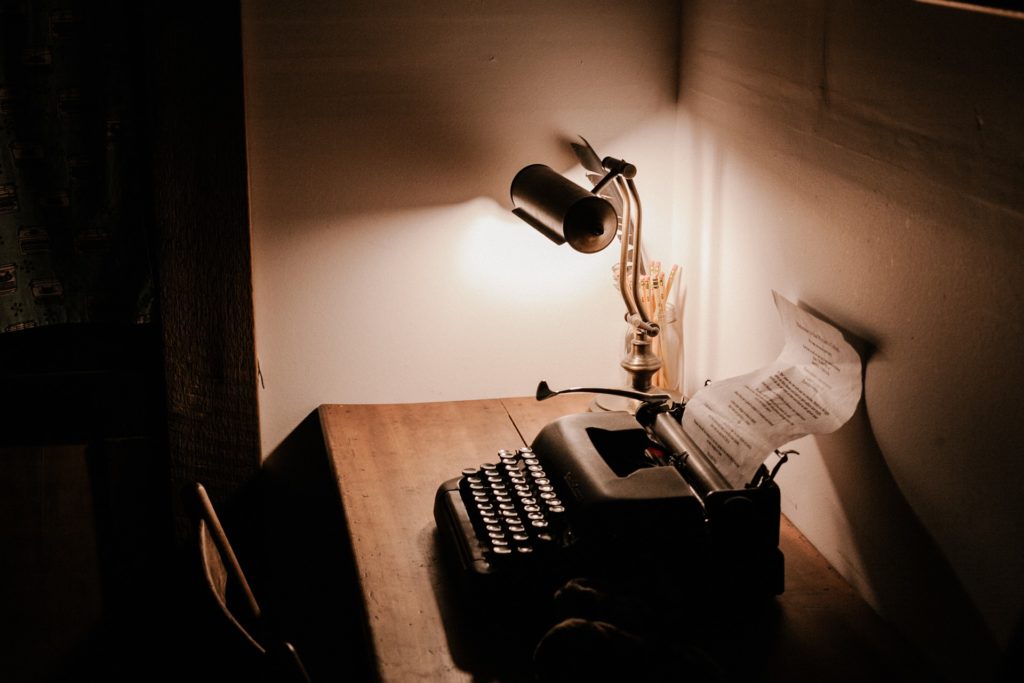Any professional in his field must have not only theoretical knowledge, but also the skills of working with a special tool, as well as having this tool available. If you work in construction and install light, professionally do portrait photography or check the safety of workplaces, you know what a light meter is. It is an invaluable assistant, both for professional areas and for some household tasks. How and where these devices are used, how to choose the best one for yourself and what are the advantages and disadvantages of this or that model, you can find out from the review prepared by the editors of the site "bestx.htgetrid.com/en/".
Content
What it is
A light meter is a specialized device that measures the level of light radiation and the actual illumination of the surrounding space. It received this name, since the illumination is considered in suites. During the day under the sun, the device can show 130,000 lux, and under the moon - only 0.3 lux.
The simplest light meter consists of a photocell and a microammeter measuring the photocurrent with scales. In order to measure different types of lighting, each has several pre-programmed modes.
Operating principle
As already noted, one of the components of a "light meter" is a photocell. It is he who converts light into electric current, the strength of which, in turn, is recognized by the indicator. There is a directly proportional relationship between the intensity of the received light and the intensity of this current, the higher one, the higher the other.
The recognition indicator, depending on the type of device, can be analog or digital. In the first version, the current acts on the galvanometer and drives the arrow, in the second version, the result is shown on the display in digital value.
In some models, it is possible to configure the operating mode, it is selected depending on the type of measured lamps (light sources).
What is it needed for
It has been scientifically proven that the efficiency of mental work is influenced by the illumination of the surrounding space. Lack of light leads to a slowdown in working processes in the human brain. Working capacity suffers, it becomes more difficult to concentrate on the task, a feeling of drowsiness arises.
In the opposite case, an excess of light contributes to excessive excitation of the nervous system, which ultimately also negatively affects labor productivity. Extreme values can lead to sad consequences in production, therefore, all illumination standards are strictly regulated by GOSTs and are checked by labor safety inspectors.
Another area of application of lux meters is greenhouse farms. Plants need certain conditions for normal growth. One of the main conditions is the availability of a sufficient amount of light. He is known to be involved in the process of photosynthesis. Plants, especially greenhouse plants, are very sensitive to the illumination index, therefore, it is impossible to effectively engage in this activity without measurements.
Other areas of application:
- control of the illumination of classrooms, libraries, museums;
- setting the exposure when photographing;
- measuring the brightness of illuminated advertising;
- in construction when installing light systems;
- for measuring the ripple of monitors.
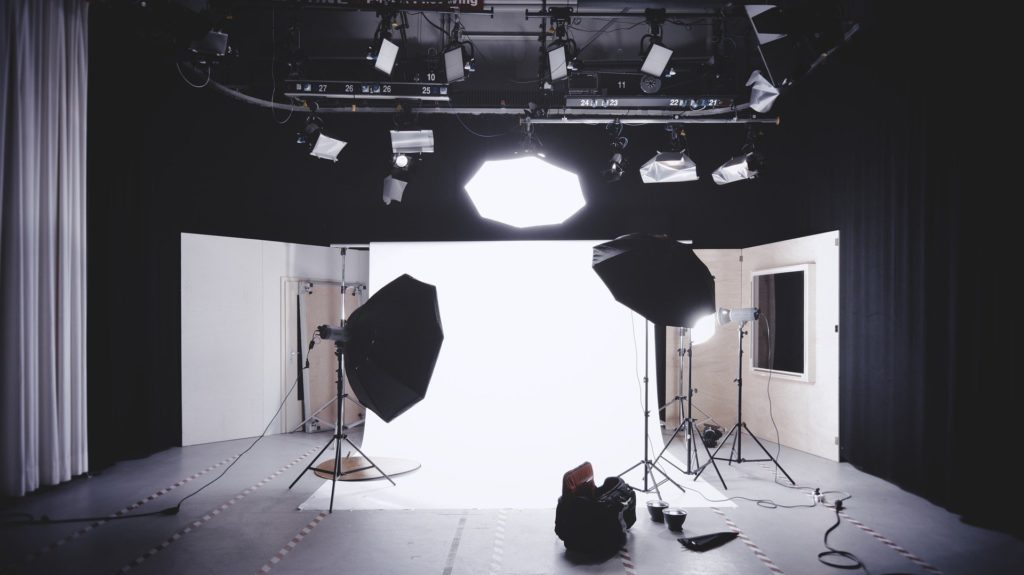
What are
As mentioned above, lux meters can be analog and digital.
- Analog ones are not the most common in the modern world. The device shows the obtained value with an arrow, which is plotted on a scale calibrated in lux. Such devices are simple and reliable, but inferior in accuracy to more modern ones.
- Digital - the measurement results are displayed on a special display.
By design, they are divided into monoblock and with a remote sensor.
- Monoblock - when the sensor is located directly on the body. This option is convenient for its mobility and is used for operational measurements. However, when a more detailed check is needed, a different type is used.
- With a remote sensor - the photocell is connected to the calculation unit with a bendable wire. There are times when you need to measure the illumination in a hard-to-reach place, and even at different angles and from different directions, then this particular device comes to the rescue. It is he who is most often used by labor safety inspectors.
Criterias of choice
Before purchasing such a device, it will be useful to familiarize yourself with the tips that will help you get the best option:
- Measurement range and sensitivity. On sale you can find devices for measuring solar and ultraviolet radiation, there are devices for measuring diode light or neon lamps. When choosing, it is worth deciding in advance what type of light you will have to work with. There are also universal devices, but their cost is much higher than specialized ones.
- Additional options. If you need to analyze several indicators at once (temperature, pressure, noise), pay attention to universal devices. Their cost will also be higher, but they will save you from the need to carry several different devices. On the contrary, if you only need a device for measuring the luminous flux, it is better to choose a simple, budgetary option.
- Ripple factor. If you need to calculate the value of this indicator, pay attention to professional equipment; household appliances do not provide a function for calculating it.
- Computer compatible. Today there are many professional data processing programs, if you have a need to transfer data from their device to a device, check out the methods of its implementation in advance. Is it possible to connect via USB or WiFi module.

How to use
- The most accurate data is obtained when light hits the photosensor at right angles.
- If your light meter does not suggest the optimal lighting values, they can be found in SNiP 23-05-95 and compared with the actual ones.
- Please note that natural and artificial lighting must be measured separately.
- To minimize errors in calculations, follow that. So that no shadow falls on the illuminated surface.
Further, in order to get a more objective picture of the rating of the best lux meters for 2020, we will divide them into two groups: household (inexpensive) and professional. When compiling this rating, not only the popularity of the model was taken into account, but also the opinions and reviews of experts and real consumers.
TOP 10 Inexpensive lux meters
CEM DT-1301
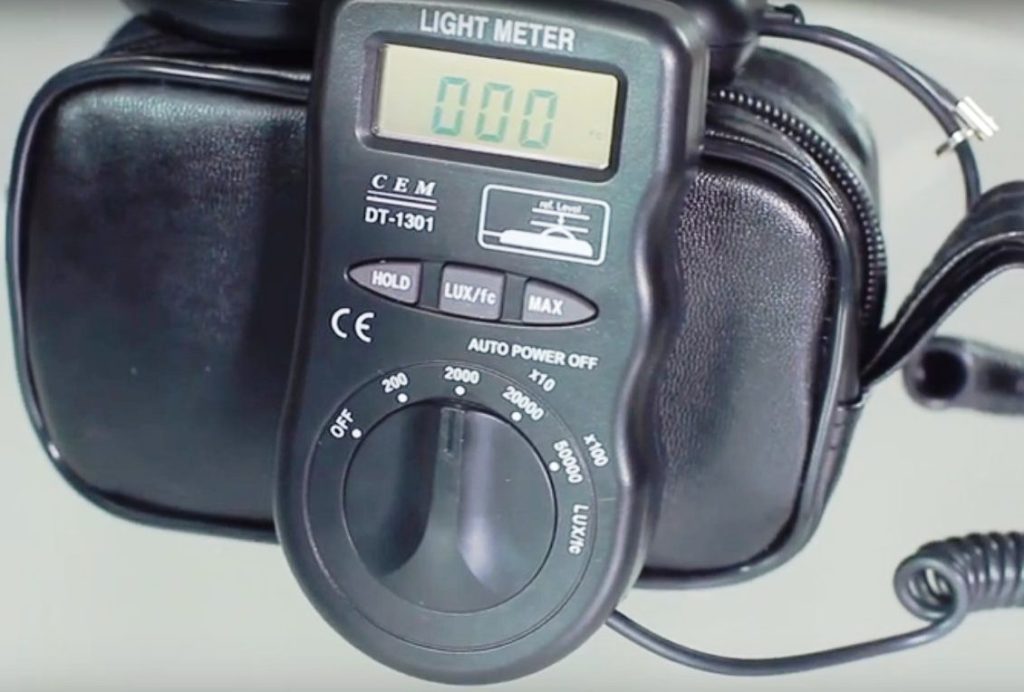
Compact instrument, well suited for measurements in schools, hospitals and sports facilities. Has a wide range of displayed data. There is an indicator of overload and battery status.
Average cost - 2 650 rubles.
Advantages:
- good contrast screen;
- ease of customization;
- auto shutdown.
Disadvantages:
- buttons are not Russified.
Sanpometer LX1010B

Advanced digital model for professional work in industrial and domestic environments. There are three measurement modes from 0 to 100,000 lux. In addition, the device can store data for later use.
Average price - 3,290 rubles.
Advantages:
- large, high-contrast screen;
- backlight;
- three measuring ranges.
Disadvantages:
- runs on a rare type battery.
Smart Sensor AR823

This meter has an error of only 3%, therefore it is suitable for a wide range of tasks for household and special purposes. Remembers data, independently calculates the value between the maximum and minimum value, and also monitors the battery charge level.
Average cost - 4,290 rubles.
Advantages:
- compact size;
- ergonomic handle;
- backlit screen.
Disadvantages:
- quite high price for this class.
LX-1010B ФАЗА
A compact and simple device from a Russian company. The photosensor is connected to the unit with a twisted channel. Measuring range up to 50 thousand lux, 18 mm LCD display, housing made of ABC plastic.
Average price - 1500 rubles.
Advantages:
- optimal price-quality ratio;
- simplicity and accuracy;
- compactness.
Disadvantages:
- small measuring range;
- there is no additional transport cover.
Smart lab FVL-001

This is a solution for those who need to quickly check the light intensity at the facility, but do not want to carry additional devices with them. This module will complement any smartphone and expand its functions to a device for measuring light. Small, compact, it takes up space no more than a battery. Works in conjunction with Android, iOS devices.
Average price - 1990 rubles.
Advantages:
- compact;
- metal body;
- does not require additional power supply.
Disadvantages:
- large error - up to 15%;
- small range of work.
MEGEON 21010
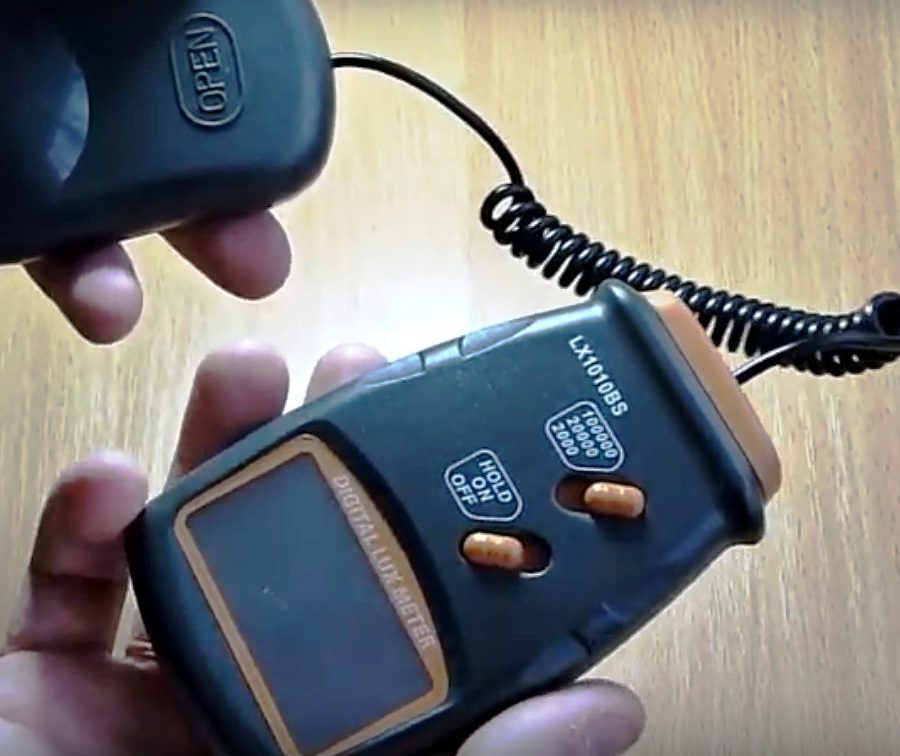
Easy to use and compact. It can be used in any room. The modern integrated seme LSI allows it to carry out measurements with minimal error and ensures long-term performance.
Average cost - 2,530 rubles.
Advantages:
- measurement error - less than 5%;
- lightness and compactness;
- good readable display.
Disadvantages:
- high price;
- build quality.
Benetech GM1020
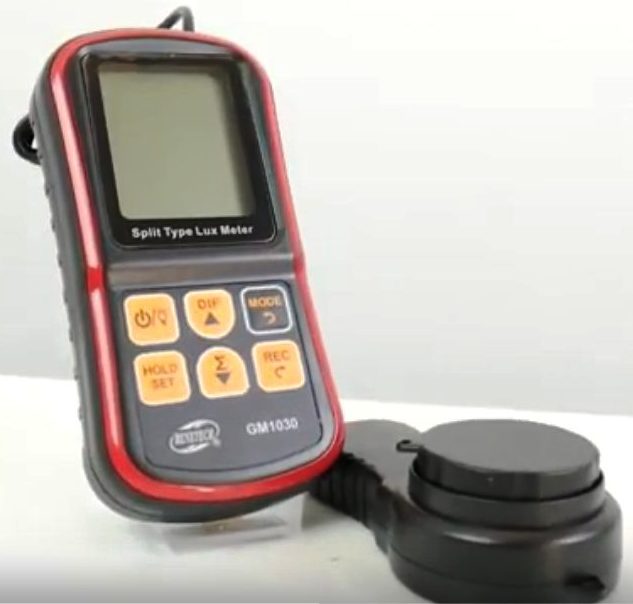
Monoblock meter. The receiving sensor is rotated 180 degrees. There is an additional possibility of measuring the ambient air temperature and the ability to communicate with a PC Powered by two AAA batteries (not included).
Average price - 2,529 rubles.
Advantages:
- easy to use;
- built-in temperature sensor;
- configurable automatic shutdown function;
- runs on common nutrients.
Disadvantages:
- not identified for this price category.
Mastech "MS6610"
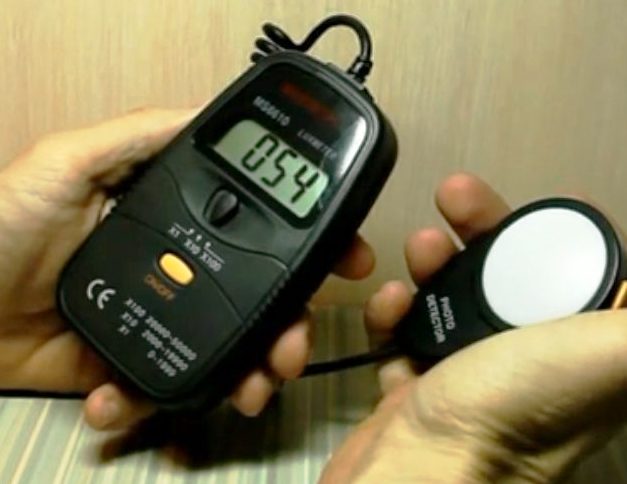
Operates in the range up to 50,000 lux. It differs from analogs in the possibility of data retention and the presence of a calculating device. In addition, there is a shock-resistant case and a long cable connecting the photosensor and the calculation unit - about 150 cm.
Average price - 2090 rubles.
Advantages:
- acceptable price;
- the presence of a counting device;
- function "Data Hold".
Disadvantages:
- there is no shipping cover included.
LuxLiner LME-10
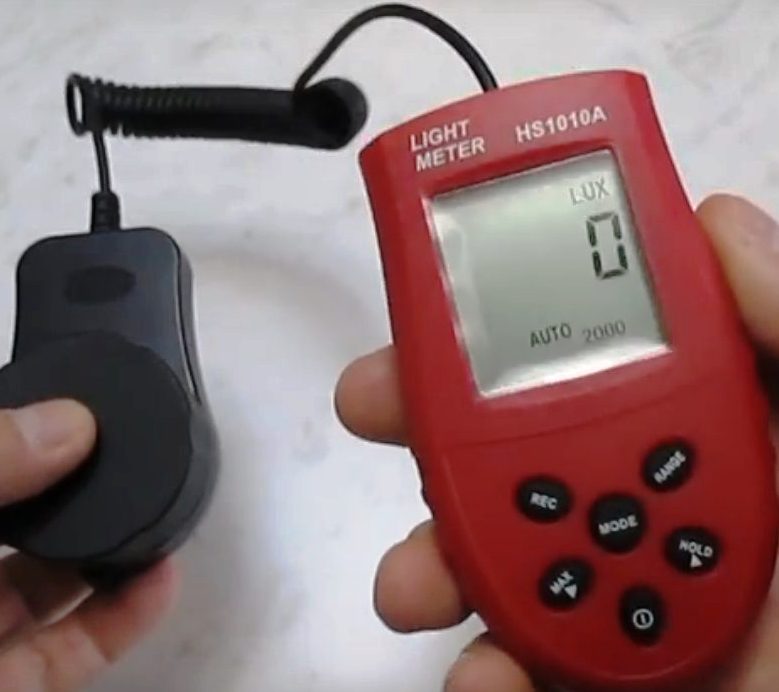
The polymer main block is not made in a standard shape for most light meters - it expands there. Where the display is located and tapers towards the bottom, it provides a more comfortable fit in the hand. Control is provided by two buttons. One turns the device on and off, the other selects the operating mode.
Average cost - 2,740 rubles.
Advantages:
- automatic calibration;
- protective case included;
- convenient form;
- function of fixing the result.
Disadvantages:
- not identified.
PeakMeter PM6612
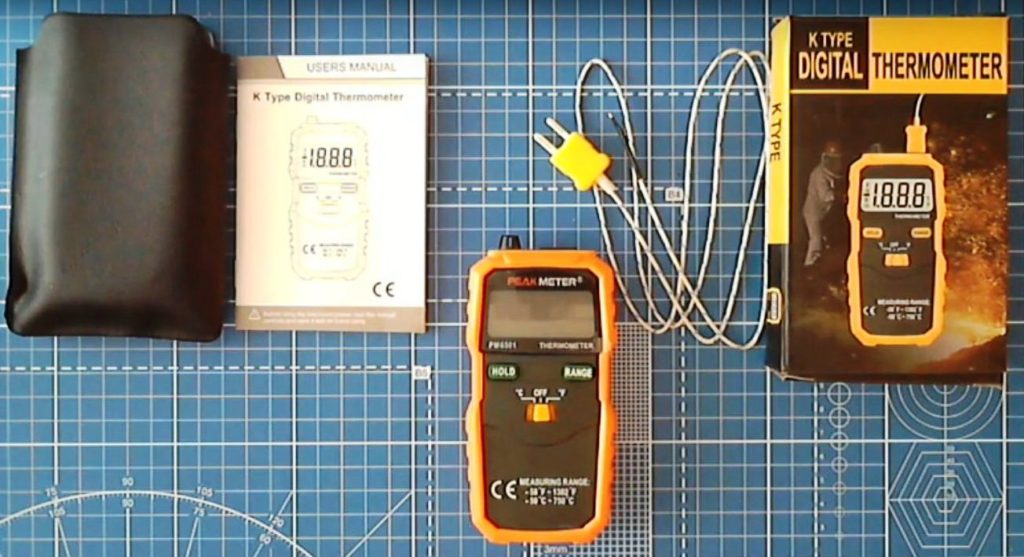
Household light level meter. Can be used for indoor and outdoor measurements. Equipped with a friendly interface and convenient control system. The large backlit display allows measurements to be taken even in poor visibility conditions.
Average price - 2,500 rubles.
Advantages:
- shockproof housing;
- convenient case included;
- high performance.
Disadvantages:
- discrepancies with actual figures are possible.
TOP 10 Professional light meters
Milwaukee MW-700
The device from the well-known oldest brand Milwaukee is made in a waterproof case. Has 3 operating modes that can be switched manually.Demonstrates improved user performance and is designed for a wide range of applications.
Average price - 8 990 rubles.
Advantages:
- build quality;
- convenient protective case included;
- sealed housing.
Disadvantages:
- there is no possibility to save and transfer data.
RADEX LUPIN (3 in 1)
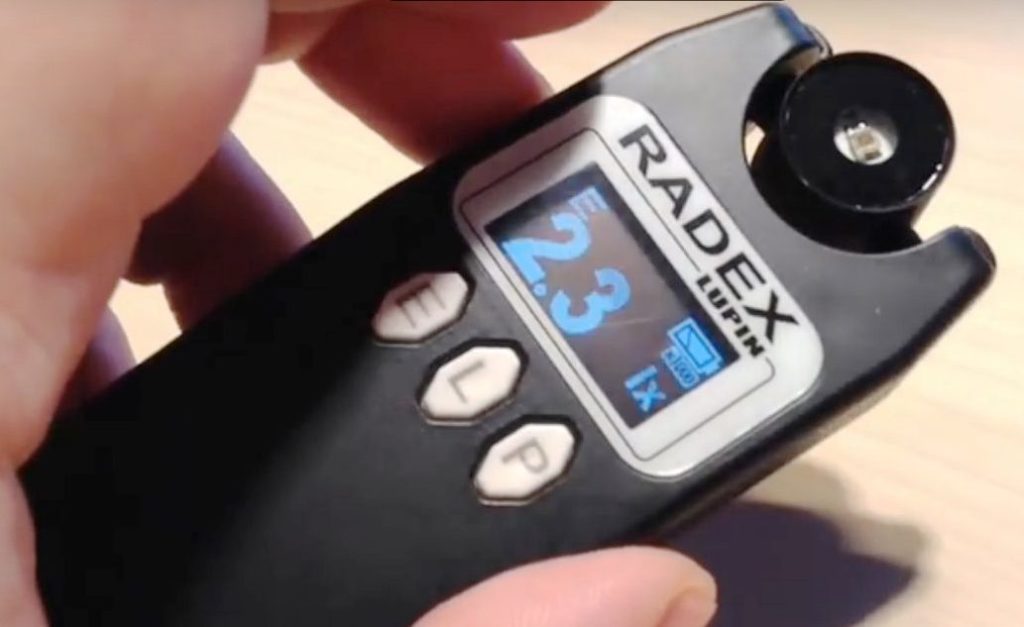
This device uses a professional photosensor that can automatically correct the spectral sensitivity. This correction allows you to measure the illumination, brightness and ripple of different light sources, in accordance with the SNiP RF. In addition to the main one, it also includes functions such as a heart rate monitor and a brightness meter.
Average cost - 5,790 rubles.
Advantages:
- design;
- monoblock body with soft touch coating;
- battery powered;
- Includes charger and USB cable.
Disadvantages:
- actual characteristics are less than stated.
TKA-PKM (08)

The device not only measures illumination, but also calculates the ripple coefficient. There is an automatic change of working ranges, a hold function, a power saving system, a backlit graphic indicator. The device fully complies with the requirements of modern GOST.
Average cost - 28,200 rubles.
Advantages:
- combines a meter for determining illumination and light pulsation;
- The USB interface allows communication with a computer or other controller.
Disadvantages:
- high price.
Testo 540
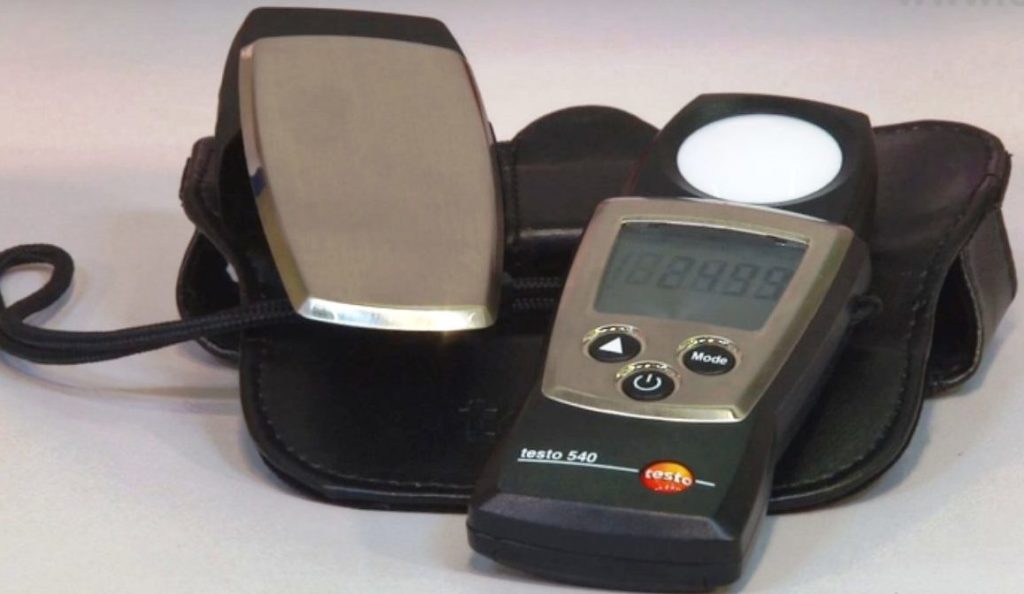
The tool in the monoblock case has a compact size for its class. The power source is AAA alkaline batteries. The range of the device is up to 99,999 lux. The large display, the ergonomic shape of the case and buttons make the work with the device simple and convenient. The device is included in the State Register.
Average price - 11,500 rubles.
Advantages:
- effective work;
- convenient handling;
- easy reading of data.
Disadvantages:
- not identified.
ELITE01

The oldest model among devices of the ELITE family. Stores in memory more than 1 million results. Using the USB interface, you can connect to a Computer or other meters. Suitable for SOUT and AWP. Included in the State Register.
Average cost - 38,900 rubles.
Advantages:
- combines three functions;
- withstands temperature drops from -20 to +50 degrees Celsius;
- surpasses all similar models of competitors;
- the ability to remember a large array of data.
Disadvantages:
- not identified.
AMTAST LX1330B

Portable meter from a Chinese manufacturer. Distinctive features are the presence of a large LCD display with backlight and a memory function for minimum and maximum values. With a modest size, it weighs more than 500 grams.
Average price - 7430 rubles.
Advantages:
- shock-proof housing;
- optimal price-quality ratio;
- measuring range up to 200 thousand lux.
Disadvantages:
- bulky;
- no case included.
ProsKit MT-4017

The compact meter is equipped with a six-digit liquid crystal display. Measures the level of light sources, domestic and industrial. The following functions are built in: auto power off, charge indicator, backlight, saving results. Measurements can be shown in suites or foot-candles. Supplied in packaging and case.
Average price - 5,050 rubles.
Advantages:
- small measurement error - no more than 3%;
- rich equipment for a reasonable price;
- ease of use.
Disadvantages:
- can only be used for internal measurements.
Laserliner LuxTest-Master 082.130A

Professional meter - allows you to work both manually and in automatic mode. Made in a case resistant to mechanical damage. Has a function that compares actual readings with reference readings. The display is backlit, the measurement error is no more than 3 lux.
Average cost - 14,132 rubles.
Advantages:
- sensitive photodiode;
- the ability to mount on a tripod.
Disadvantages:
- overall;
- not included in the state register.
CEM Instruments DT-8809A
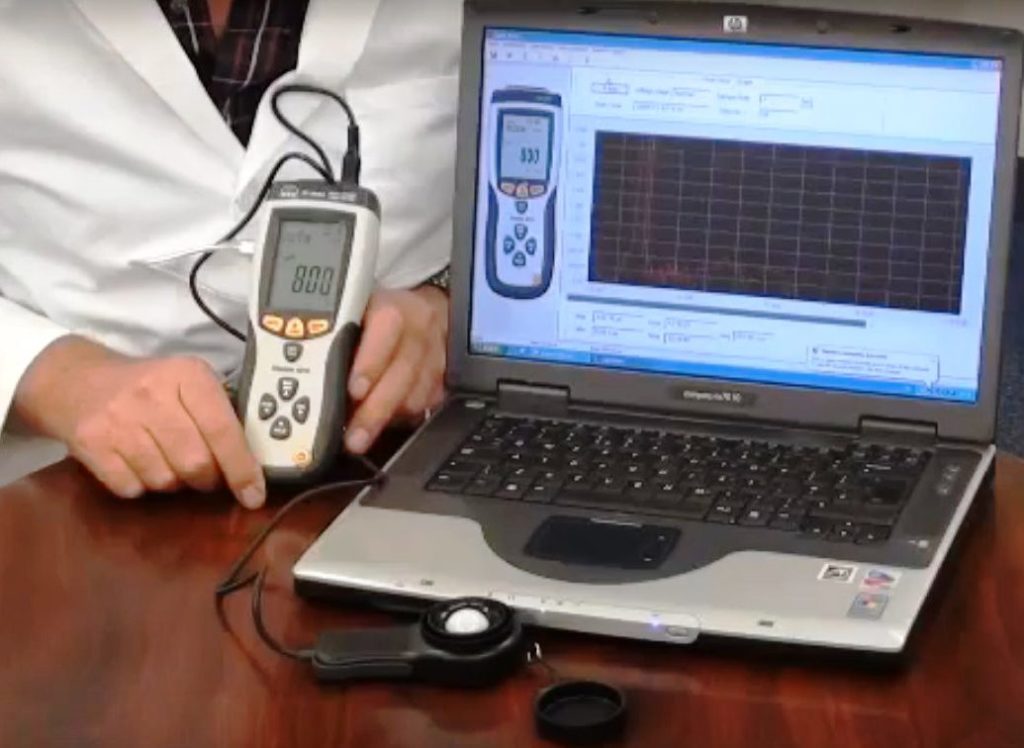
Differs in compactness and durability. Adapted for use in the field.It has a 4-level operating range, an automatic zeroing function and the ability to display relative indicators.
Average cost - 8300 rubles.
Advantages:
- Peak-hold mode;
- USB interface;
- 2 years manufacturer's warranty;
- the ability to remember about 100 values.
Disadvantages:
- not included in the state register.
Rexant MS6612T 13-1216
A unique feature of this device is that in addition to digital indication, there is also an analog scale. The rest of the functions are similar to those of competitors: data hold, highlight, zeroing, maximum and minimum values.
The average cost is 6,000 rubles.
Advantages:
- low energy consumption;
- wide measurement range.
Disadvantages:
- it is impossible to take measurements in hard-to-reach areas.
A wide selection of lux meters gives reason to believe that every specialist will find for himself the model that will not only "affordable" for him, but also suitable for the combination of functions and consumer qualities.
If you have any device from our rating. Share your opinion about him in the comments.

